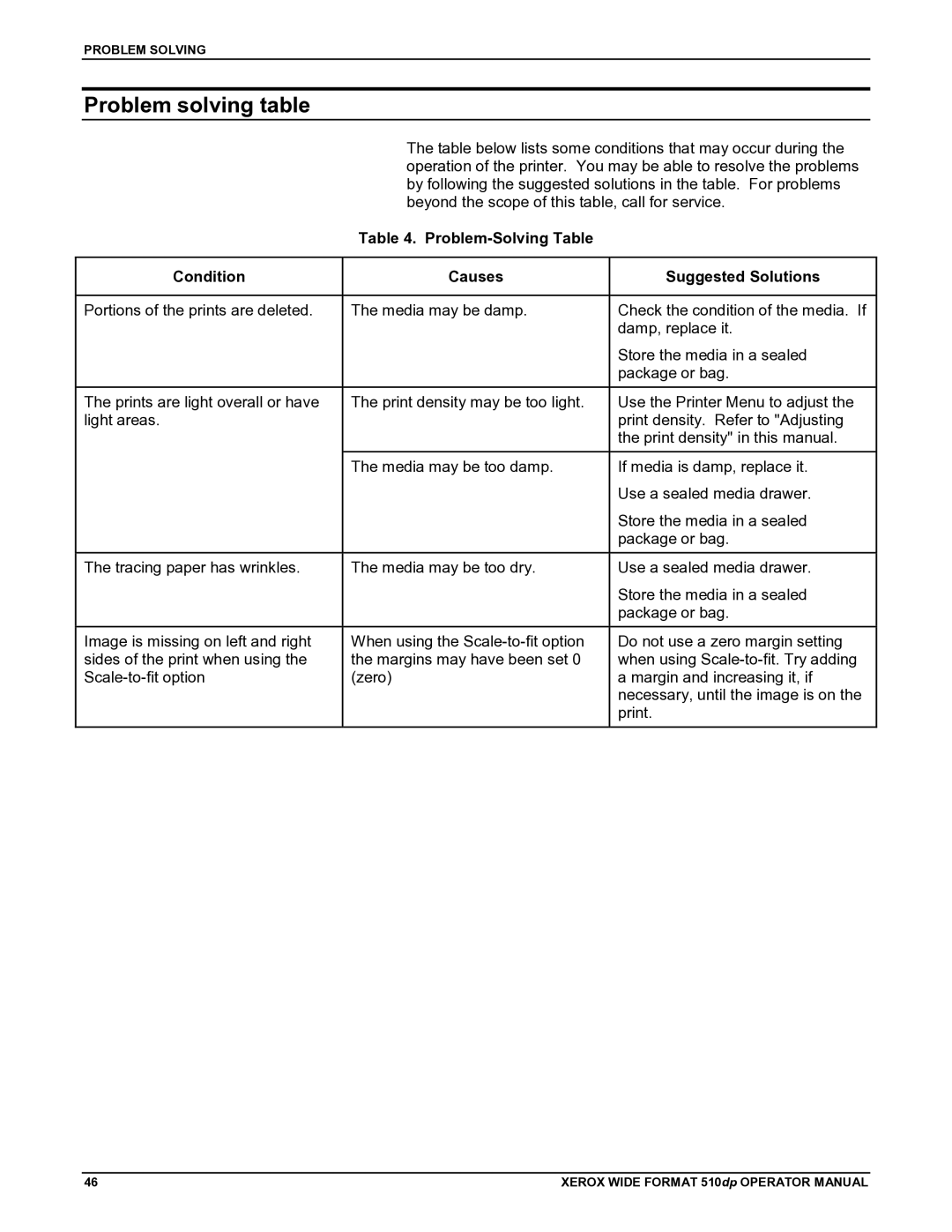510DP specifications
The Xerox 510DP is a notable early digital printing system that revolutionized the approach to high-quality document production in the 1980s. Designed for commercial and in-plant printing environments, this machine was well-regarded for its unique combination of quality, speed, and reliability that met the burgeoning needs of businesses seeking to streamline their printing processes.One of the hallmark features of the 510DP is its advanced laser printing technology. Unlike traditional ink-based printers of its time, the Xerox 510DP utilized a laser scanning mechanism that provided finer detail and sharper image quality. This technology not only enhanced the precision of text reproduction but also ensured exceptional photo-quality graphics, meeting the demands of graphic designers and commercial printers.
The Xerox 510DP also boasted a high printing speed, making it an efficient choice for high-volume printing tasks. With a production rate of up to 120 pages per minute, it significantly reduced turnaround times for large print jobs, something that was critical in a competitive market where time often equated to revenue. The ability to handle a variety of paper sizes and weights further added to its versatility, ensuring that users could produce everything from simple black-and-white documents to complex color brochures.
In terms of operation, the 510DP featured a user-friendly interface designed for ease of use, even for those without extensive technical expertise. Its intuitive controls allowed operators to quickly set up jobs and make adjustments as needed, reducing the likelihood of errors and downtime during production. Additionally, the system's modular design allowed for configuration changes and upgrades, ensuring that it could adapt to evolving printing requirements.
The Xerox 510DP was also equipped with advanced data handling capabilities, allowing it to process complex print jobs with ease. Its support for various data formats and compatibility with numerous software applications made it an attractive option for businesses looking to integrate their printing workflows with existing infrastructure.
In summary, the Xerox 510DP represented a significant advancement in printing technology during its time. With its cutting-edge laser printing capabilities, impressive speed, user-friendly interface, and flexible configuration options, it set a standard for digital printing systems that paved the way for subsequent innovations in the industry. Its impact can still be felt today as companies continue to rely on digital solutions for their printing needs.

